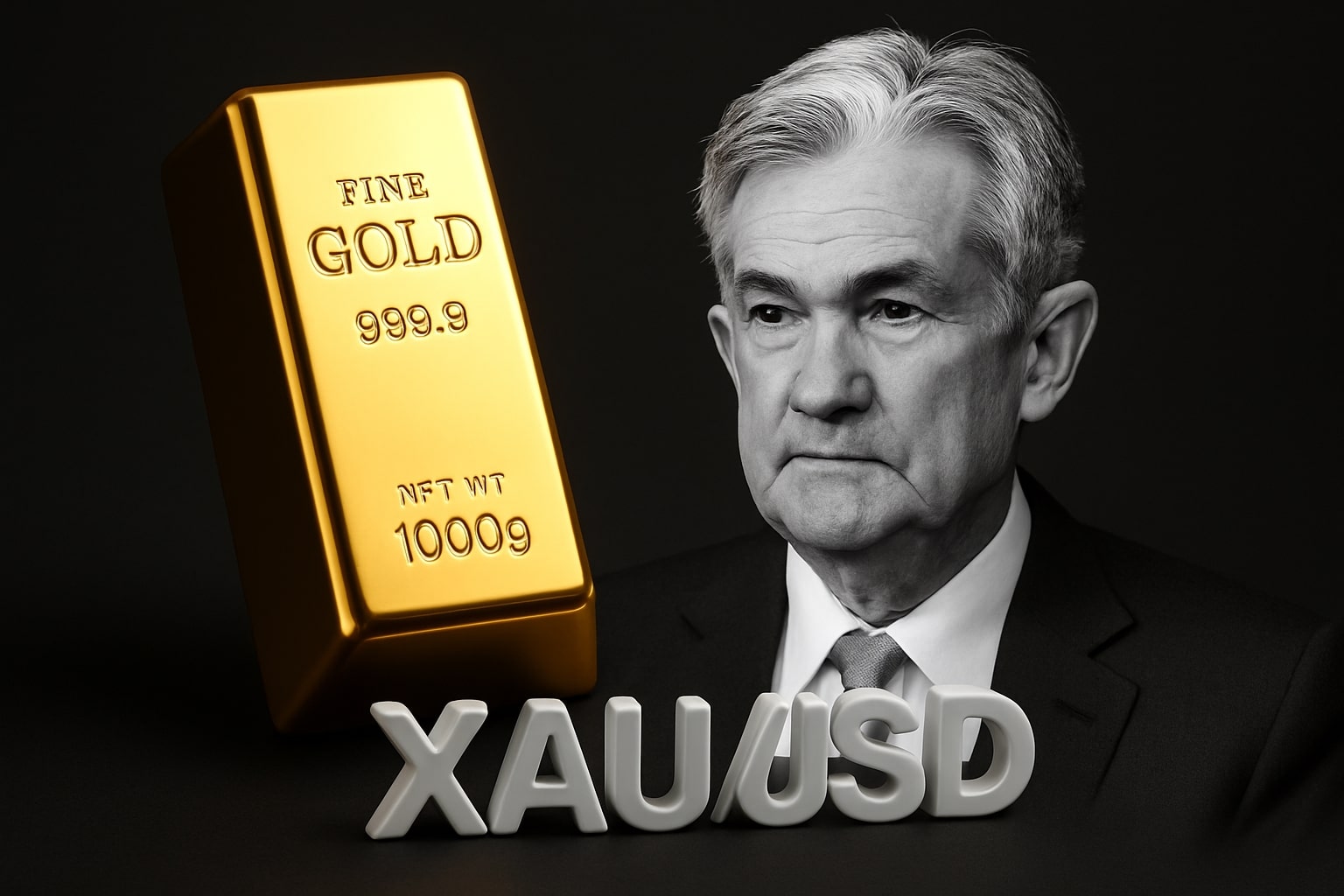
Oil Price - Crude Oil (WTI, Brent) Holds Near $61 as Oversupply, U.S.–China Tensions, and Canada’s Expansion Define Market
After touching five-month lows, WTI trades at $57.71 (+0.33%) and Brent at $61.25 (+0.39%) amid renewed oversupply signals, falling Chinese imports, and Canada’s 600,000 bpd export surge | That's TradingNEWS
Oil Prices (CL=F, BZ=F) Struggle to Find Balance as Global Oversupply Meets Weak Demand and Political Tension
Crude oil prices remain trapped between conflicting market forces, with WTI Crude (CL=F) trading near $57.71, up 0.33%, and Brent Crude (BZ=F) at $61.25, up 0.39%, in a fragile recovery after hitting their lowest levels since early May. The rebound follows weeks of heavy losses driven by fears of a widening global supply surplus and demand destruction linked to slowing industrial activity across the United States, Europe, and Asia. The brief uptick reflects technical short-covering rather than genuine improvement in fundamentals, as traders digest mounting inventories and OPEC+’s decision to push ahead with additional supply despite market softness.
Shifting Market Structure and the Return of Contango Signal Weak Near-Term Demand
The oil curve has flipped into contango, with future-dated contracts trading above prompt barrels—a clear sign of oversupply expectations. Brent’s front-month spread has softened toward +$0.35, while WTI’s curve mirrors similar weakness, pointing to comfortable storage levels. Analysts warn that this setup could deepen if global demand fails to recover, with the International Energy Agency (IEA) forecasting a potential 4 million barrels per day surplus by 2026, as both OPEC+ and non-OPEC producers accelerate output. Despite OPEC’s attempts to maintain cohesion, the group’s planned additions—roughly 500,000 barrels per day through early 2026—risk clashing with faltering consumption in Europe and Asia, where refining margins are already compressed.
U.S. Supply Builds Challenge Bullish Narratives
American crude inventories continue to climb, reinforcing the oversupply narrative. The latest market survey ahead of the EIA’s weekly report points to another build in U.S. crude stockpiles, with draws in gasoline and diesel offering only partial relief. Earlier reports confirmed larger-than-expected crude builds during the week ending October 10, aligning with falling refinery utilization rates across the Gulf Coast. The resilience of U.S. shale output, particularly in the Permian Basin, where daily production hovers near 5.8 million barrels, continues to offset OPEC+ discipline. This glut has pressured WTI into a narrow trading corridor between $55 and $59, a range reflecting the market’s inability to absorb new barrels in the absence of stronger downstream demand.
Brent Crude (BZ=F) Tests $60 Amid Global Trade Uncertainty
Brent’s struggle around the $60 per barrel threshold underscores investor hesitation as the global trade landscape remains in flux. The recent meeting between President Donald Trump and President Xi Jinping offered rhetorical optimism, but no tangible policy resolution on tariffs, technology transfers, or energy flows. China’s crude imports in September fell to 11.5 million barrels per day, their lowest since January, as refineries increased throughput and reduced storage needs. The result has been fewer seaborne cargoes from the Middle East and U.S., heightening volatility in Atlantic Basin markets. The Baltic Exchange’s new benchmarks TD28 and TD29, which now track Canadian crude shipments to Ningbo, China, and the Pacific Area Lightering zone, highlight how trade flows are evolving in response to these geopolitical rifts.
Canada’s Trans Mountain Expansion Changes Global Flows
The completion of the Trans Mountain Expansion Project in May 2024 has transformed Canada from a pipeline-constrained exporter into a Pacific competitor. The pipeline tripled export capacity to 890,000 barrels per day, unlocking nearly 600,000 bpd of new access to Asian buyers. Over 70% of shipments from British Columbia’s terminals are now bound for China, giving Beijing an alternative to U.S. crude amid escalating trade frictions. The Baltic Exchange’s creation of new tanker benchmarks underscores how rapidly Canada’s role in global oil geopolitics has shifted. The added competition has widened price spreads, with Western Canadian Select trading at just $10 below WTI, compared to discounts of over $20 two years ago.
Geopolitical Flashpoints Intensify Supply Risks but Fail to Lift Prices
Geopolitical turbulence continues to shape market psychology, even if it has not yet tightened physical supply. Drone strikes on a Russian gas plant in Orenburg, a tanker explosion off Yemen, and ongoing disruptions in Kazakhstan’s oilfields underscore rising regional risks. Yet prices have remained largely unmoved, indicating that global inventories are ample enough to absorb localized shocks. Even OPEC’s reference basket, at $61.74, fell 0.08%, while Mars US crude slipped 1.33% to $71.01. The muted reaction reveals how bearish sentiment has overwhelmed short-term supply disruptions, suggesting traders are positioning for prolonged weakness rather than reacting to isolated risks.
Read More
-
Disney Stock Price (NYSE:DIS) Advances on Streaming Recovery, AI Profit Upside and Strong Park Momentum
21.10.2025 · TradingNEWS ArchiveStocks
-
XRP News: XRP Price Forecast Sees XRP-USD Holding $2.52 as Institutional Accumulation and Technical Reversal Drive Outlook
21.10.2025 · TradingNEWS ArchiveCrypto
-
Gold Price Retreats From Record as China’s Demand Meets Global Profit-Taking
21.10.2025 · TradingNEWS ArchiveCommodities
-
Stock Market Today - Dow Jumps 308 Points on Strong Earnings; Gold Sinks as Trade Tensions Ease
21.10.2025 · TradingNEWS ArchiveMarkets
-
GBP/USD Price Forecast - Pound Slides Below 1.34 as Dollar Strengthens and Inflation Data Looms
21.10.2025 · TradingNEWS ArchiveForex
Analyst Divisions: Structural Oversupply vs. Investment Deficit
While near-term signals favor the bears, longer-term projections remain divided. Norway’s Var Energi ASA argues that chronic underinvestment in upstream capacity will act as a floor for prices beyond 2026, preventing crude from falling sustainably below $60 per barrel. The company expects balance to return as high-cost producers curtail drilling, noting that ten new Norwegian projects, including Balder X and Johan Castberg, have break-even prices below $35 per barrel. Conversely, the IEA warns that production growth from U.S. shale, Brazil, and Guyana could add 3.5 million bpd by late 2025, prolonging the surplus into 2026 if consumption stagnates.
Technical Landscape: Oil Markets Hover Near Critical Levels
From a technical perspective, WTI (CL=F) remains capped below $59, where sellers have repeatedly defended resistance since mid-September. The 50-day moving average ($58.95) now acts as a pivot, while the 200-day average ($61.40) marks the upper barrier for trend reversal. A sustained drop below $55 could trigger momentum selling toward $52, while a breakout above $60.50 would open the path to $63.30 (Murban parity). Brent (BZ=F) shows a similar pattern, holding fragile support at $60.00 with upside capped by $63.50. The return to contango reinforces that physical buyers see no urgency to restock, keeping speculative positioning thin.
Macroeconomic Headwinds and Energy Policy Pressures
The macro backdrop remains challenging. The U.S. dollar index has firmed near 98.70, weighing on commodity prices. Europe’s industrial slowdown, particularly in Germany, continues to erode diesel demand, while China’s refinery throughput increase coincides with a drop in crude imports, tightening margins globally. India’s Reliance Industries boosted Middle East crude purchases to hedge against Russian volatility, while Japan resisted U.S. calls to halt Russian energy imports. Meanwhile, Prime Minister Mark Carney in Canada faces domestic backlash as his aggressive export stance clashes with climate pledges, highlighting the political trade-offs of energy expansion amid decarbonization goals.
Outlook: Oil Prices Enter Stagnation Phase Amid Contradictory Forces
The combined influence of persistent oversupply, shifting trade alliances, and constrained investment has left oil prices range-bound with limited upside catalysts. The short-term market remains vulnerable to further weakness if demand indicators fail to rebound, particularly in China and Europe. Yet, structural supply deficits, especially in long-cycle projects, could stabilize prices above $55–$60 per barrel by mid-2026.
Verdict: Hold / Bearish Bias. Crude benchmarks WTI (CL=F) and Brent (BZ=F) are likely to remain capped below resistance until clear evidence of tightening supply or policy-driven demand emerges. While long-term fundamentals argue for eventual balance, near-term trends favor a defensive stance as volatility persists and contango reinforces bearish sentiment.



















